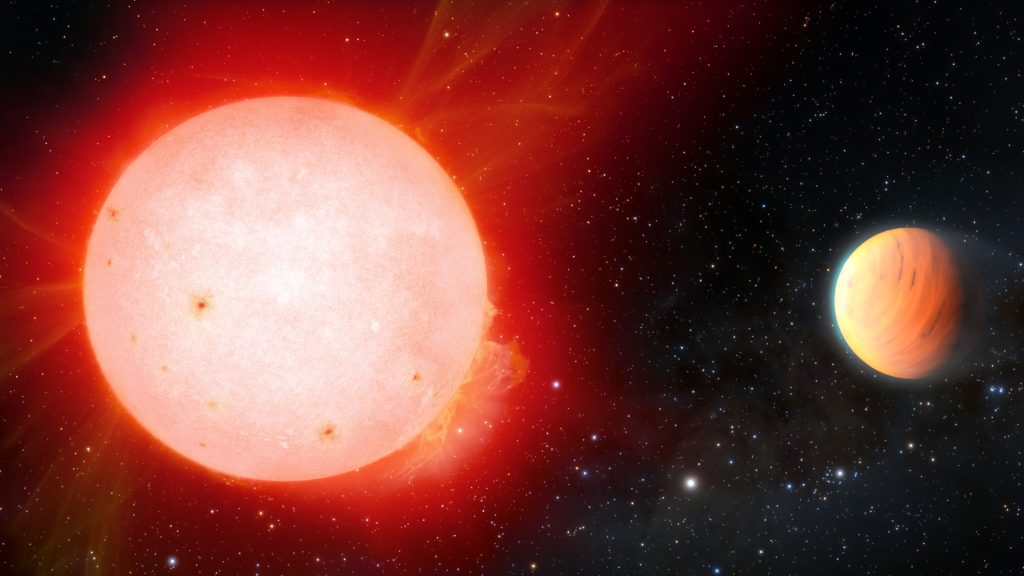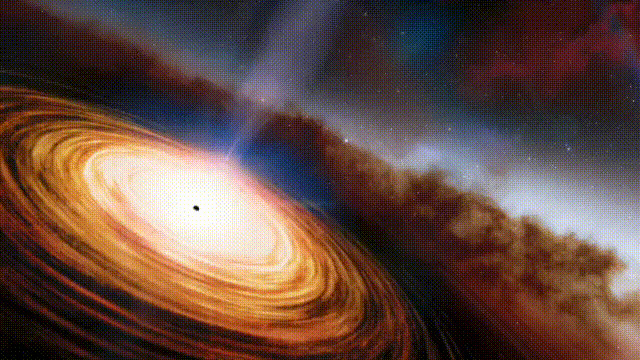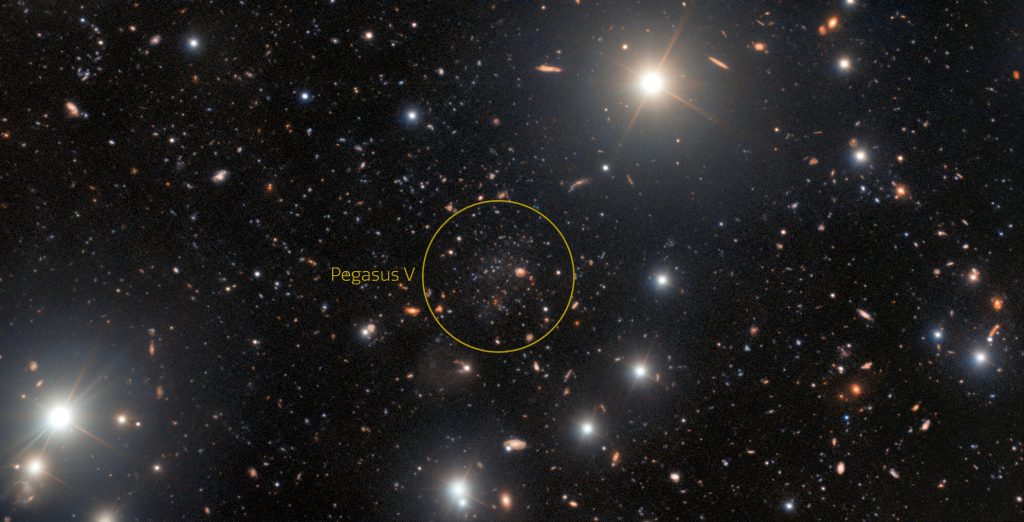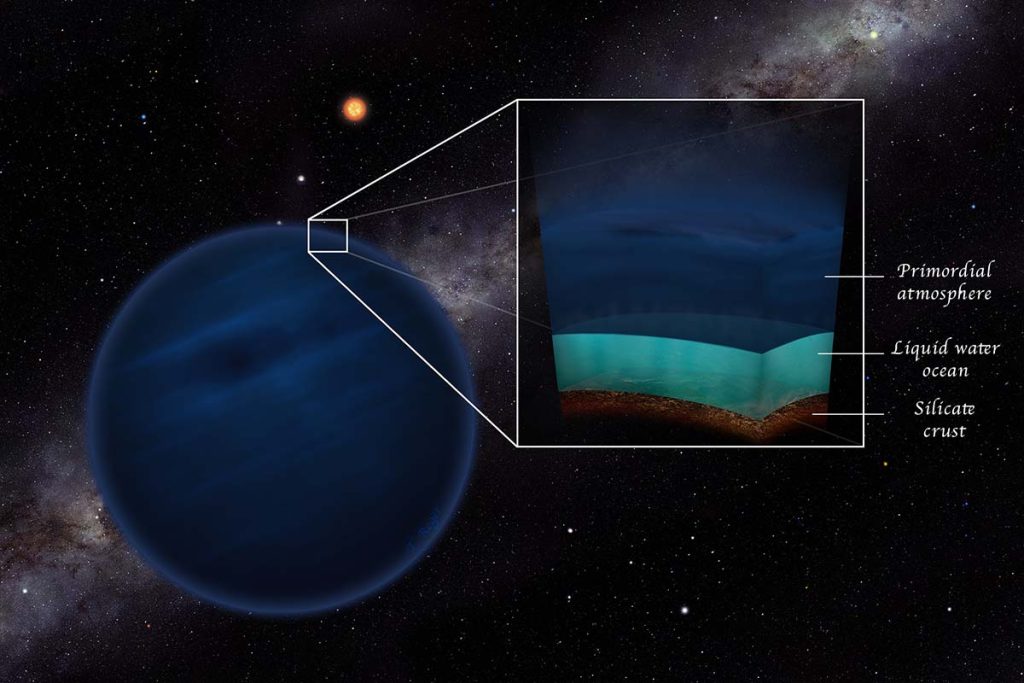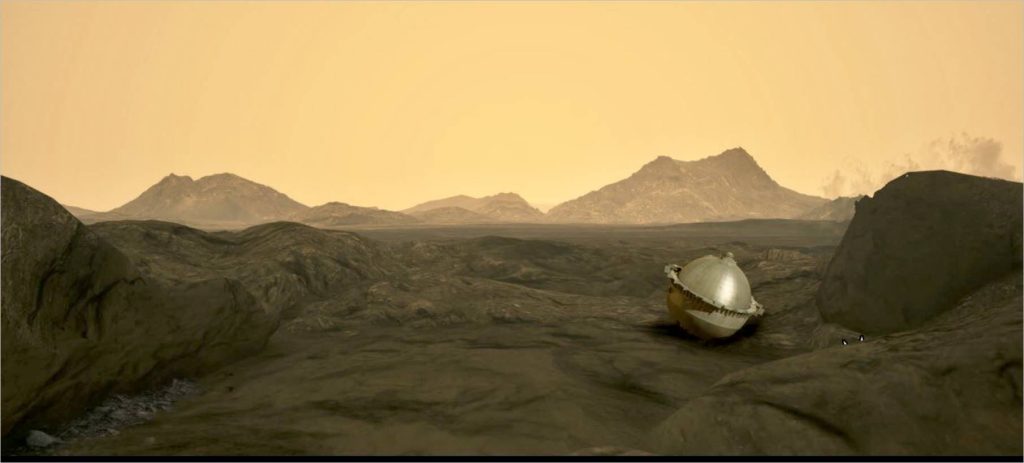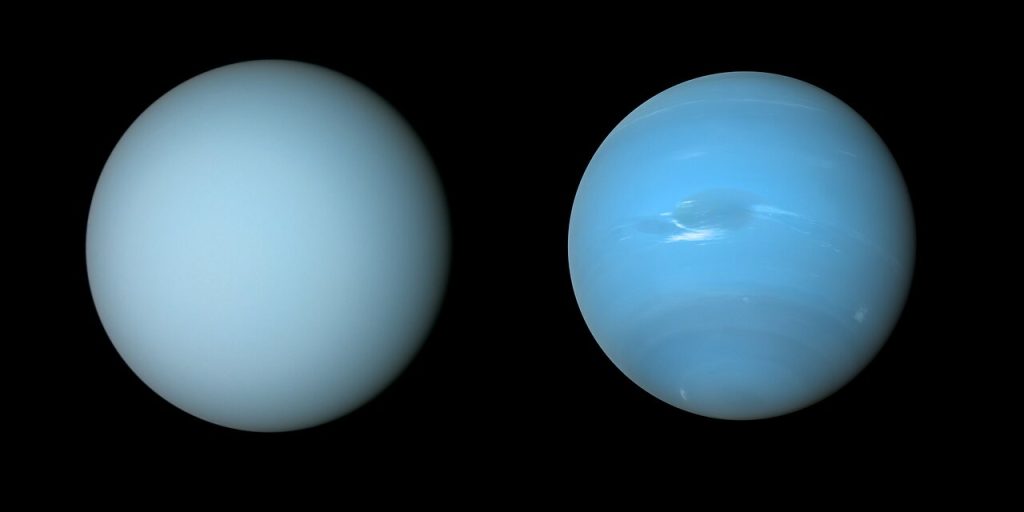Fluffy planet orbits a cool red dwarf star
Astronomers using the 3.5-meter WIYN telescope at Kitt Peak National Observatory in Arizona have observed an unusual Jupiter-like planet in orbit around a cool red dwarf star. This planet, designated TOI-3757 b, is located about 580 light-years from Earth in the constellation Auriga, the charioteer, and is the lowest density planet ever discovered around a red dwarf star. Researchers estimate that its average density is equivalent to that of a marshmallow. Red dwarf stars are the smallest and faintest members of the so-called main sequence stars - stars that convert hydrogen to helium at a uniform rate in their…
